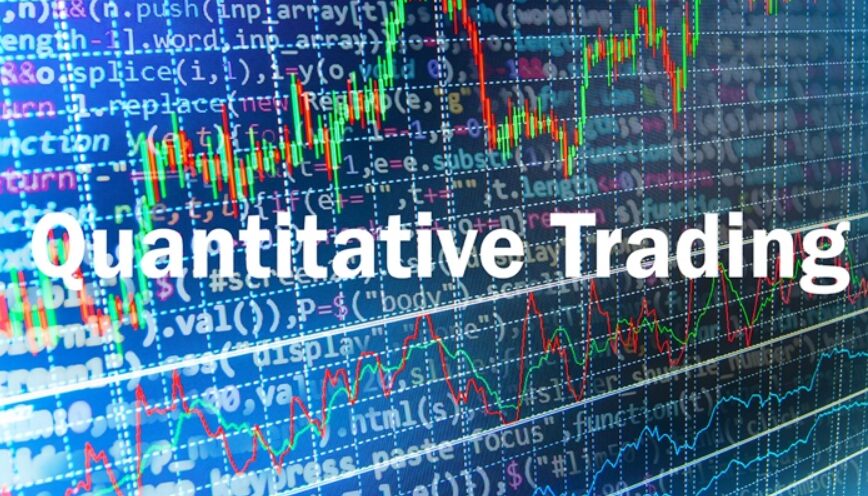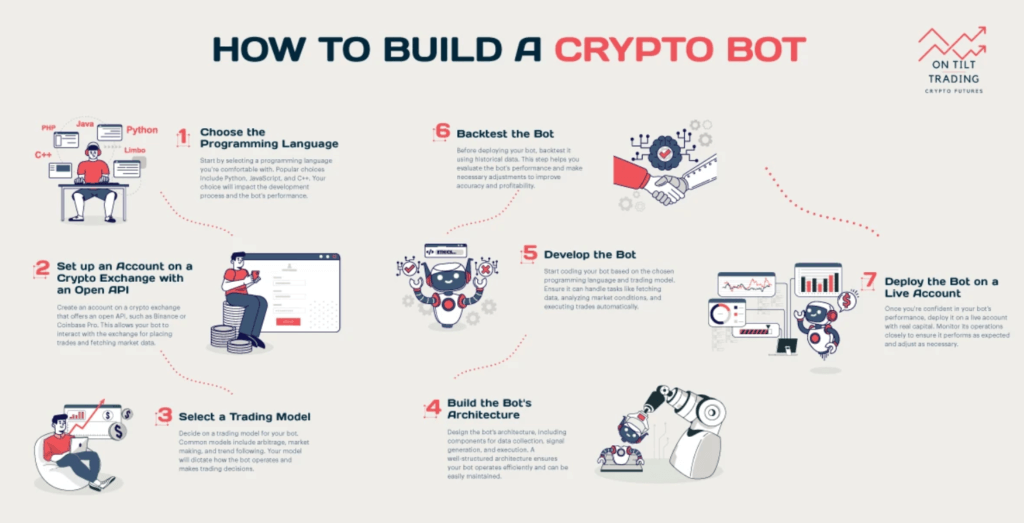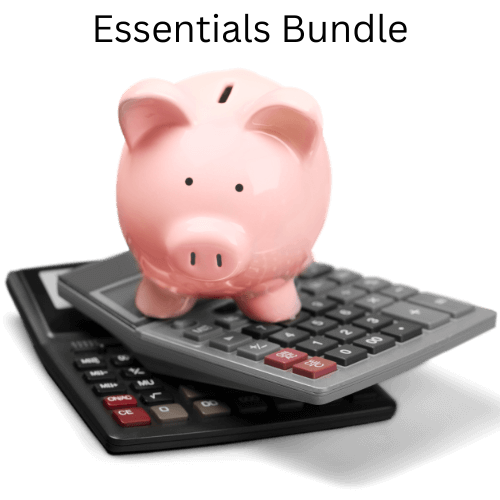Approximately 70% of trades in the U.S. stock market are executed by algorithms based on artificial intelligence. AI trading has become a buzzword in the financial world, promising to revolutionize the way we trade stocks, cryptocurrencies, and other assets. What is AI trading for beginners? If you don’t have a proper idea about AI trading then you are at the right place. We will discuss everything you need to know about AI trading.
What is AI Trading?
AI trading refers to the use of artificial intelligence technologies to automate trading processes, make predictions, and execute trades. These advanced software or apps utilize vast amounts of data and sophisticated algorithms to analyze market trends, and identify opportunities. After that, these tools can trade automatically or according to your preferences.
Investors can build their own customized tools to make trading decisions. In that case, you have to integrate the tool with a trading platform. Additionally, some platforms offer their own tools for trading and provide options to implement your own strategies. But to get success you have to choose a reliable crypto trading platform. Prime XBT is a platform for trading crypto and commodities.
You can purchase crypto or trade CFDs in gold or EUR/USD. Besides, the platform allows you to start risk-free trading. All who use promo code PRIMEOTT will receive a +7% bonus on their deposit. Join Prime XBT now.
How AI Trading Works?
AI trading systems operate on different platforms and employ various procedures to gather information, analyze it, and execute trades. Here’s a step-by-step look at how AI trading works:
Data Collection
The first step in AI trading is data collection. AI systems gather vast amounts of data from different sources, including:
- Market Data: Prices, volumes, and historical data of financial instruments.
- News and Social Media: News articles, social media posts, and other sources of market sentiment. It helps traders to make instant decisions according to market conditions.
- Economic Indicators: Data on economic performance, such as GDP, unemployment rates, and inflation.
Data Analysis
Once the data is collected, AI systems use advanced algorithms to analyze it. This analysis involves:
- Identifying patterns and trends in the data that can indicate potential trading opportunities.
- Using historical data to predict future market movements.
- Assessing market sentiment by analyzing news articles, social media posts, and other textual data.
Decision Making
Based on the analysis, the AI system makes trading decisions. Choose the most appropriate trading strategy based on the current market conditions and the analysis performed. Advanced bots can also assess the risk associated with each trade and adjust the strategy accordingly.
Trade Execution
Finally, the AI system executes the trades. Place buy or sell orders on the trading platform. Besides, investors can make decisions according to the analysis. Continuously monitoring the market and the performance of the trades, making adjustments as necessary.
Common Types of AI Trading Strategies
AI trading systems use various strategies to maximize returns and minimize risks. Some of the common strategies include:
Algorithmic Trading
Algorithmic trading involves using predefined rules and algorithms to execute trades. These algorithms can be based on technical indicators, such as moving averages, or more complex mathematical models.

Quantitative Trading
Quantitative trading uses statistical and mathematical models to identify trading opportunities. This approach often involves backtesting strategies on historical data to ensure their effectiveness.

High-Frequency Trading (HFT)
HFT involves executing a large number of trades in a very short period, often milliseconds. This strategy relies on sophisticated algorithms and high-speed data feeds to capitalize on small price movements.

Types of Trading Bots
AI trading bots come in various forms, each designed for different types of assets and trading strategies. Here are some examples:
Stock Trading Bots
Stock trading bots are designed to trade equities. They analyze market data, company performance, and other relevant factors to make trading decisions. The following are some of the most popular stock trading bots:
- Trade Ideas: The tool uses artificial intelligence to generate trading ideas and execute trades.
- EquBot: It uses machine learning and AI to analyze data and make investment decisions.
Cryptocurrency Trading Bots
Cryptocurrency trading bots are designed to trade digital assets like Bitcoin and Ethereum. They analyze market data, news, and other factors specific to the cryptocurrency market. Some popular crypto trading bots include:
- 3Commas: The platform offers a range of trading bots and tools for cryptocurrency trading.
- Cryptohopper: The advanced automate the trading states
Machine Learning in AI Trading
Machine learning plays a crucial role in AI trading. It involves training algorithms to learn from data and improve their performance over time. Some key machine learning techniques used in AI trading include:
Predictive Models
Predictive models use historical data to make predictions about future market movements. These models can be based on various techniques, such as linear regression, decision trees, and neural networks.
Sentiment Analysis
Sentiment analysis uses natural language processing (NLP) techniques to analyze textual data and gauge market sentiment. This information is then used to make trading decisions.
Reinforcement Learning
Reinforcement learning involves training algorithms to make decisions based on rewards and penalties. This can involve training a bot to maximize returns by learning from its trading performance.
Benefits and Challenges of AI Trading
| Benefits | Challenges | |
| Speed and Efficiency | AI can process and execute trades at high speeds | High-frequency trading by AI can contribute to market volatility and flash crashes. |
| Data Analysis | AI can analyze vast amounts of data quickly | Requires large datasets and high-quality data to function effectively. |
| Emotionless Trading | AI makes decisions based on data, not emotions | Lack of human intuition can sometimes result in poor decision-making in complex situations. |
| 24/7 Trading | AI systems can operate continuously without fatigue, capturing opportunities round the clock. | Continuous operation requires robust systems to handle maintenance and unexpected issues. |
| Backtesting | AI can simulate trading strategies on historical data to assess potential performance. | Historical data may not always predict future market conditions accurately. |
| Scalability | AI systems can manage and execute numerous trades simultaneously, scaling operations. | Scalability may require significant computational resources and infrastructure. |
| Risk Management | AI can monitor multiple risk factors simultaneously, optimizing risk management strategies. | Over-reliance on AI for risk management can be problematic if models are not properly validated. |
| Cost Reduction | AI can reduce the need for human traders, lowering operational costs. | Initial setup and ongoing maintenance of AI systems can be expensive. |
| Market Insight | AI can provide deeper insights into market dynamics and potential opportunities. | Interpretation of AI-generated insights requires expertise to ensure they are actionable. |
| Adaptability | AI can quickly adapt to changing market conditions and adjust strategies accordingly. | AI systems require constant updates and tuning to stay effective in dynamic markets. |
How to Get Started With AI Trading?
You should familiarize yourself with fundamental trading concepts before diving into AI trading. Learn about stocks, forex, commodities, and cryptocurrencies. Besides, you have to understand how markets operate and the basic principles of technical and fundamental analysis. After that:
Choose the Right Platform
Select an AI trading platform that suits your needs. Popular options include platforms like Trade Ideas, MetaTrader 4 with AI plugins, and Vestinda. Make sure the platform offers robust security features, a user-friendly interface, and comprehensive customer support.
Set Up an Account
Once you’ve chosen a platform, set up your trading account. This usually involves providing personal information, verifying your identity, and funding your account. Start with a small investment to mitigate risk while you learn the ropes. If you are using a third party bot you have to integrate it with the trading platform.
Backtesting and Simulation
Most AI trading platforms offer backtesting features. It allows you to test your strategies against historical data. Use this feature to refine your strategies and gain confidence. Additionally, practice with simulation accounts to understand how your AI model behaves in real market conditions without risking real money.
Develop Your Own Strategy And Apply
You can develop and refine your trading strategies based on your risk tolerance, financial goals, and market analysis. Combine technical indicators and fundamental analysis to create robust strategies. Besides, you can take help from professionals.
Stay updated with market news and trends. Besides, follow financial news outlets, join trading forums, and participate in online communities. Continuous learning is crucial to adapt to the ever-evolving financial markets.
Read More: Why Do Trading Bots Fail
Final Words
AI trading is transforming the financial industry by automating trading processes. By leveraging machine learning techniques like predictive models, sentiment analysis, and reinforcement learning. While AI trading offers many benefits, it also presents challenges.
AI trading platforms like Vestinda offer comprehensive features to automate and enhance trading strategies. With pre-built and customizable strategies, traders can tailor their approach. Vestinda integrates seamlessly with major crypto exchanges, allowing for diversified trading across cryptocurrencies, stocks, and commodities. Visit Vestinda to explore its unique features.



